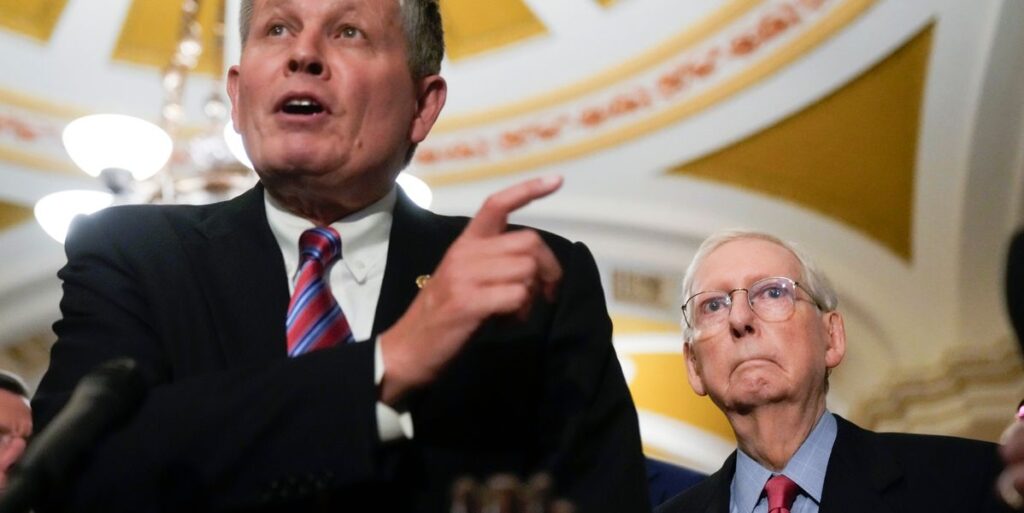In 2023, Senate Minority Leader Mitch McConnell and NRSC Chair Steve Daines projected optimism about the Republican Party’s position heading into the 2024 elections. They believed that this election cycle could mark a significant turning point for the GOP, leveraging a favorable Senate map where Democrats were defending six seats in states previously won by Donald Trump. Both leaders emphasized that this opportunity could shape the Senate’s composition for an entire decade. However, as the elections approached, Republicans faced an uphill battle, struggling to capitalize on what was seen as a rare opportunity to expand their majority, with significant concerns about the viability of several candidates in key races.
McConnell and Daines laid out strategies to enhance the GOP’s chances, notably recruiting wealthy candidates capable of self-funding their campaigns to counter Democratic fundraising advantages. This approach was predicated on a belief that relatively little effort was needed to defend Republican incumbents in states like Texas and Florida. Initial successes, such as securing strong candidates like West Virginia Governor Jim Justice, pointed to a promising landscape. Still, internal GOP assessments suggested that the party’s overall strategy might be faltering, as some candidates faced significant challenges related to their backgrounds and public perceptions.
As the election drew near, the NRSC insisted they were executing their plan effectively, with internal polling suggesting a potential majority for Republicans. However, veteran strategists within the party expressed disappointment, noting that simply winning the Senate might not be enough to satisfy expectations, especially given the perception that the GOP was leaving opportunities untapped. The broader implications of the election outcomes were underscored by demographic realities; there are more solidly red states than blue, and ongoing trends of split-ticket voting were in decline, further complicating Republican ambitions.
Despite their edge, Republicans were predicted to perform well in red-state seats but faced dire prospects in swing states, with Democrats retaining primary advantages in races across Nevada and Arizona. This stark contrast illustrated the challenges the GOP faced in overcoming Democratic momentum in key battlegrounds, despite a perceived shift of white working-class voters toward the Republican Party following Trump’s 2016 campaign. The Democratic Party, benefiting from strong grassroots fundraising, was well-equipped to counteract the GOP’s financial advantages.
The struggles of wealthy self-funders highlighted issues within the GOP’s recruitment strategy as some candidates encountered damaging controversies that Democrats exploited effectively. Accusations and questions regarding candidates’ backgrounds underscored vulnerabilities that could weaken potential Republican victories. Prominent individuals within the party acknowledged that the retention of quality candidates in competitive states could largely hinge on internal party dynamics and the lingering presence of Trump in the political landscape, suggesting a complex interplay between candidate quality and voter sentiments.
Campaign dynamics revealed signs of internal rifts within the GOP, as established incumbents were reportedly required to raise their own coordinated spending significantly more than in past cycles, potentially detracting from necessary support in their campaigns. Frustrations persisted regarding financial misallocations in pivotal races where candidates saw uneven levels of outside funding. Even advantaged Republican candidates grappled with polling challenges, displaying an unsettling lack of momentum, leaving the GOP at a critical juncture as they sought to maximize their election prospects while balancing a complex web of candidate dynamics and internal party expectations.

